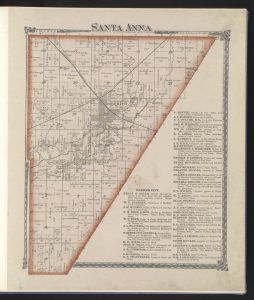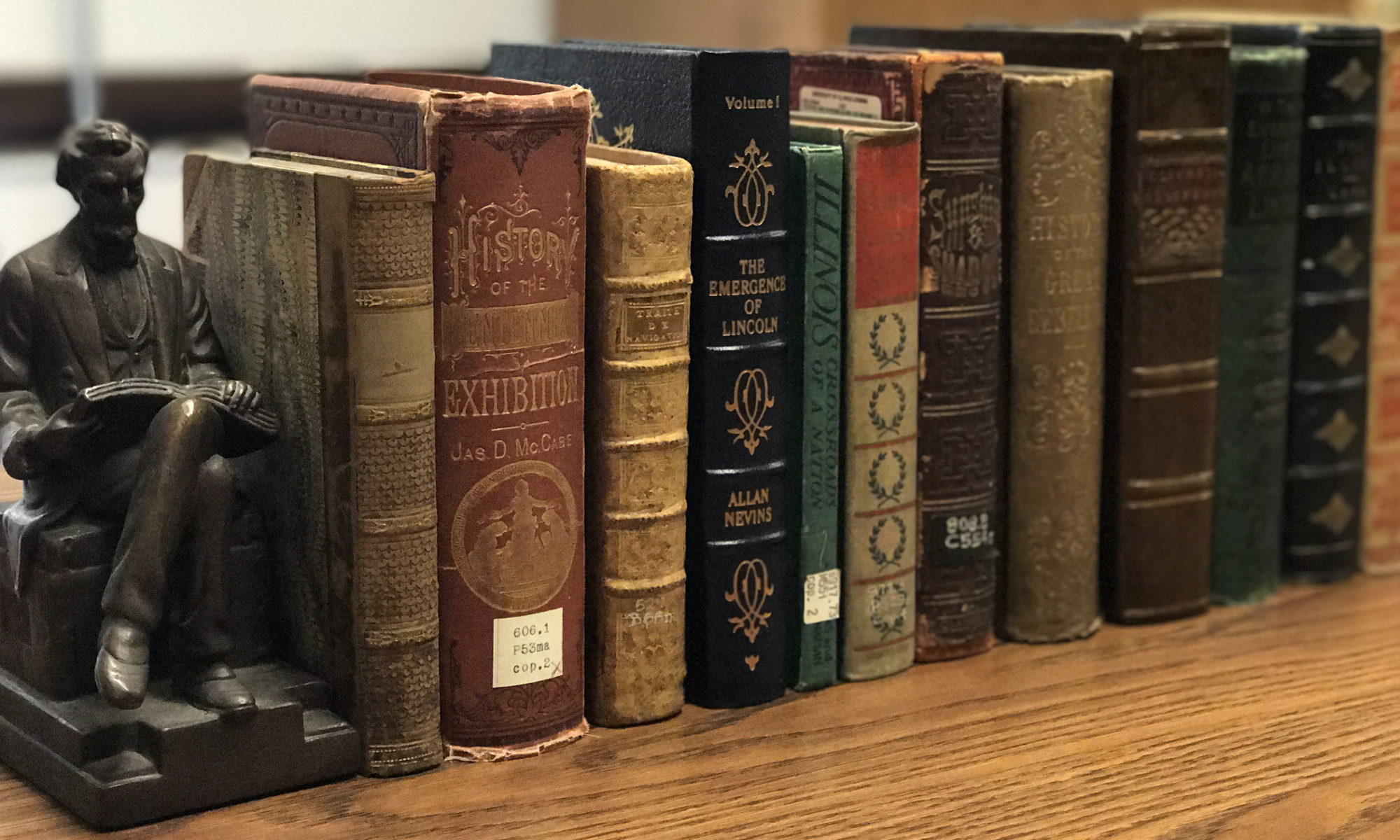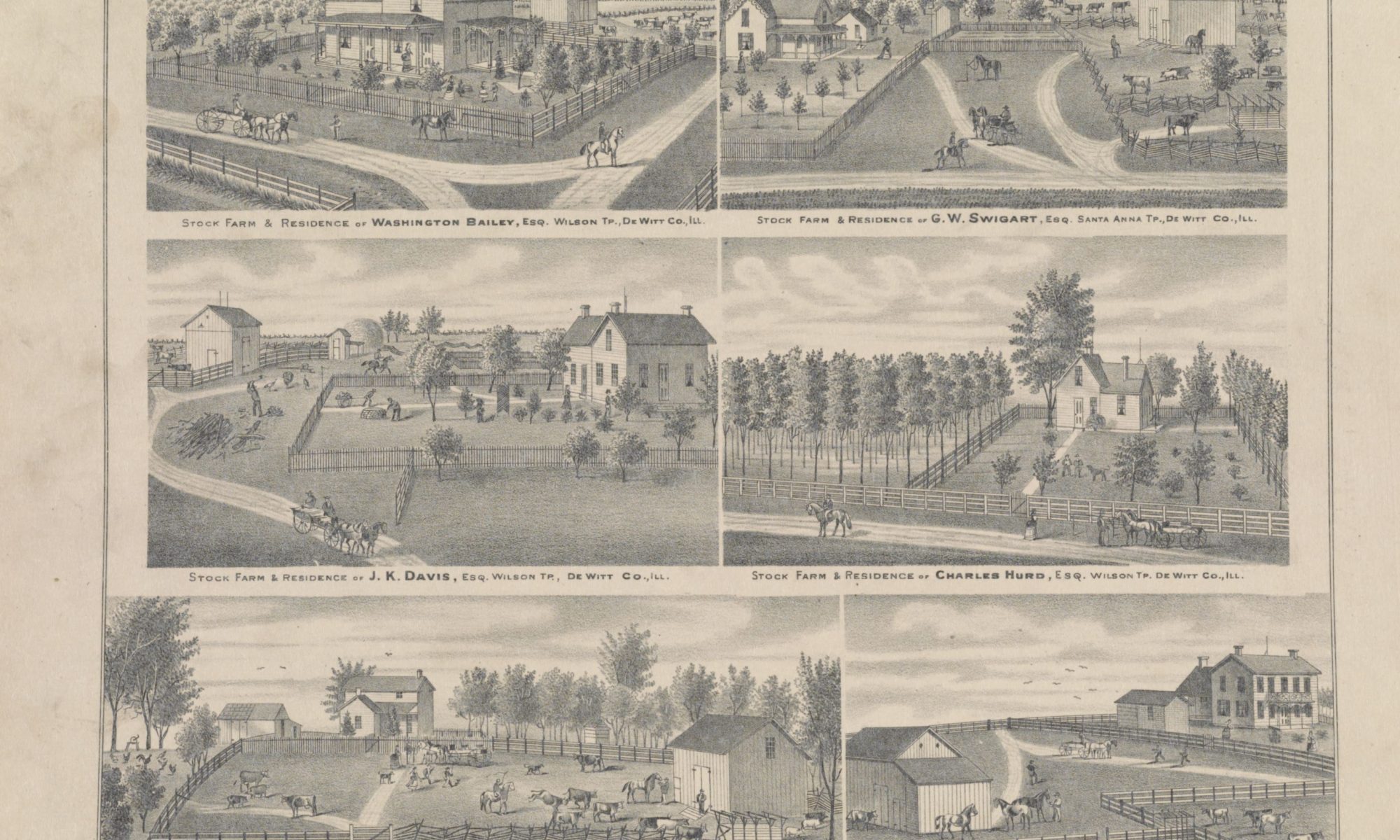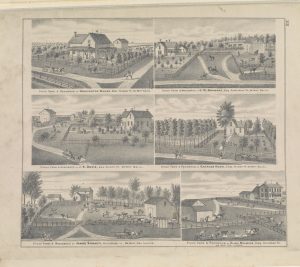Population-1815
Welcome back to Small Town Saturday! This week, we’ll be looking at Farmer City Illinois.
Farmer City, a small town in DeWitt County Illinois, had a complicated early life. The first town in the area was founded by a man by the name of Dennis Hurley, who arrived in 1830. He named the area “Hurley’s Grove,” though this name would not last long. Hurley would severely injure himself with the ramrod of his gun shortly after settling in the region. He was followed by Nathan Clearwater and Richard Kirby, with 9 families living in the area by 1835.

By 1837, 19 families lived in Hurley’s Grove. This town, however, would be replaced by a new one by a surveyor out of LeRoy. A new town, Mt. Pleasant, was platted and laid out near the original Hurley’s Grove settlement. The name, however, caused issues with the state authorities of Illinois, as there was an existing Mt. Pleasant in Illinois. The state declared that the town would need a different name in order to have a post office. As a result, the town took a vote and became “Santa Anna,” which remains the name of the local township. From there, the town “grew to reach the railroads.” The town, growing, voted to rename itself “Farmer City” in 1869, owing to the almost entirely agricultural economy of the town. Town residents particularly pointed to the use of corn for heating fuel as a sign of their connection to farming and the land.
By the end of the 19th century, Farmer City was home to around 1200 residents, not all of whom were farmers. Towards the end of the century, banking became a major industry in Farmer City, though a catastrophic fire in the central business district of the town in 1894 burned down several of the banks. A tile factory was also built, which remained in operation until at least 1962. The residents of Farmer City also were keen attendees of “Bean’s Opera House,” built in the 1870s, until the establishment burned down in 1891. The Opera House was promptly replaced by a second, which existed for some years before being demolished. It’s not clear from our sources, but it seems unlikely that the Opera Houses were principally used for operatic performances. They were likely buildings for all manner of performance in Farmer City. Unfortunately, no record of the demolition of the second Opera House appears to have been preserved. These Opera Houses were ultimately replaced by movie theaters, the first of which opened in Farmer City in 1914.
Nineteenth-century Farmer City was a chaotic time for the news industry in the town. The very first newspaper in the city was the Republican, which ran for only 6 months before shutting down. The longest-lasting Farmer City newspaper was the Public Reaper, which lasted from 1878 to 1892. Most of the other newspapers in the town’s history lasted mere months or even weeks.
The end of the century also saw the beginning of electrification in Farmer City. The date of the first electric lamppost is disputed, but a certain date of 1891 can be given. Some sources suggest that the first electric lamppost was put up in 1888, but this earlier claim has less support. This claim may be related to the actions of Abe Evans, a farmer city resident who purchased a small generator and provided electricity to several neighboring houses. In 1891, he was hired to build a larger steam electric plant for the city, which was purchased by the city the next year. The steam plant was converted to diesel operation in the 1930s and continues to operate. Today, Farmer City is located a few dozen miles from the nuclear Clinton Power Plant in Clinton, Illinois, which powers much of the surrounding area. Construction of the Clinton Nuclear Power Plant also led to the construction of the artificial Clinton Lake, which extends to within a few miles of Farmer City. Farmer City residents remain proud of their “light plant”, as it is still known, which continues to provide backup and supplementary power in the event of a power outage at the main substation.
The city was also very well known for organizing enormous county fairs. Early works of Farmer City history claim that over 10,000 people attended these fairs, more than ten times the actual population of the town in the early 20th century, the time of these fairs’ peak. These fairs must have drawn attendees from towns dozens of miles in all directions, almost certainly from the entirety of DeWitt county, and potentially neighboring counties as well. Farmer City remains the home of the DeWitt County Farmer City Fair to this day, though the event is no longer as regionally known as in the past. Today, the city also hosts an antiques show every March, which has run for over 20 years.
As Farmer City moved into the 20th century, it got a little larger, though not by much, the population peaking at 2252 in the 1980 census before declining once again to around 1800 today. In the 1960s, Farmer City had a few schools. Today, the city holds the elementary and high schools of the Blue Ridge community school district. Gas heat and a sewage treatment plant would be brought to the city in the 1950s, with cable television following in the 1980s.
The largest modern attraction in Farmer City is the Farmer City Raceway, which organizes motorsports races every Friday from March to October. The Raceway’s history, according to the Farmer City City Hall website, began in 1938, with a dirt track. The Raceway moved and was redeveloped several times over the next 80 years, ultimately ending up in its current location north of the town. Racing categories also changed over the years, as different forms of auto racing became popular, then became expensive to compete in, and so were replaced by the next cheap form of the sport. Particularly popular in the 30s and 40s was “midget auto racing,” with small cars and large engines. Today, this form of the sport has faded out, but the Raceway is still home to races for much of the year.
To learn more, IHLC holds several resources:
Six Score and Five; a Brief but Exciting History of Farmer City in Its 125th Anniversary. Farmer City, Ill, 1962. https://i-share-uiu.primo.exlibrisgroup.com/permalink/01CARLI_UIU/17ks9l7/alma99242870412205899
Clinton, 1835-1985, DeWitt County, Illinois, 1839-1985. Clinton, IL (207 Cedar Dr., Clinton 61727): G. Wylder [distributor, 1985. https://i-share-uiu.primo.exlibrisgroup.com/permalink/01CARLI_UIU/17ks9l7/alma99504808412205899
Atlas of De Witt Co. and the State of Illinois : To Which Is Added an Atlas of the United States, Maps of the Hemispheres, &c. &c. &c. Chicago: Warner & Beers, Publishers, Lakeside building, cor. of Clark & Adams Sts., 1875. https://digital.library.illinois.edu/items/2d1fac40-fe25-0139-7ab5-02d0d7bfd6e4-6
Non-IHLC Sources:
https://www.cityoffarmercity.org/history/
https://www.farmercityracing.com/


